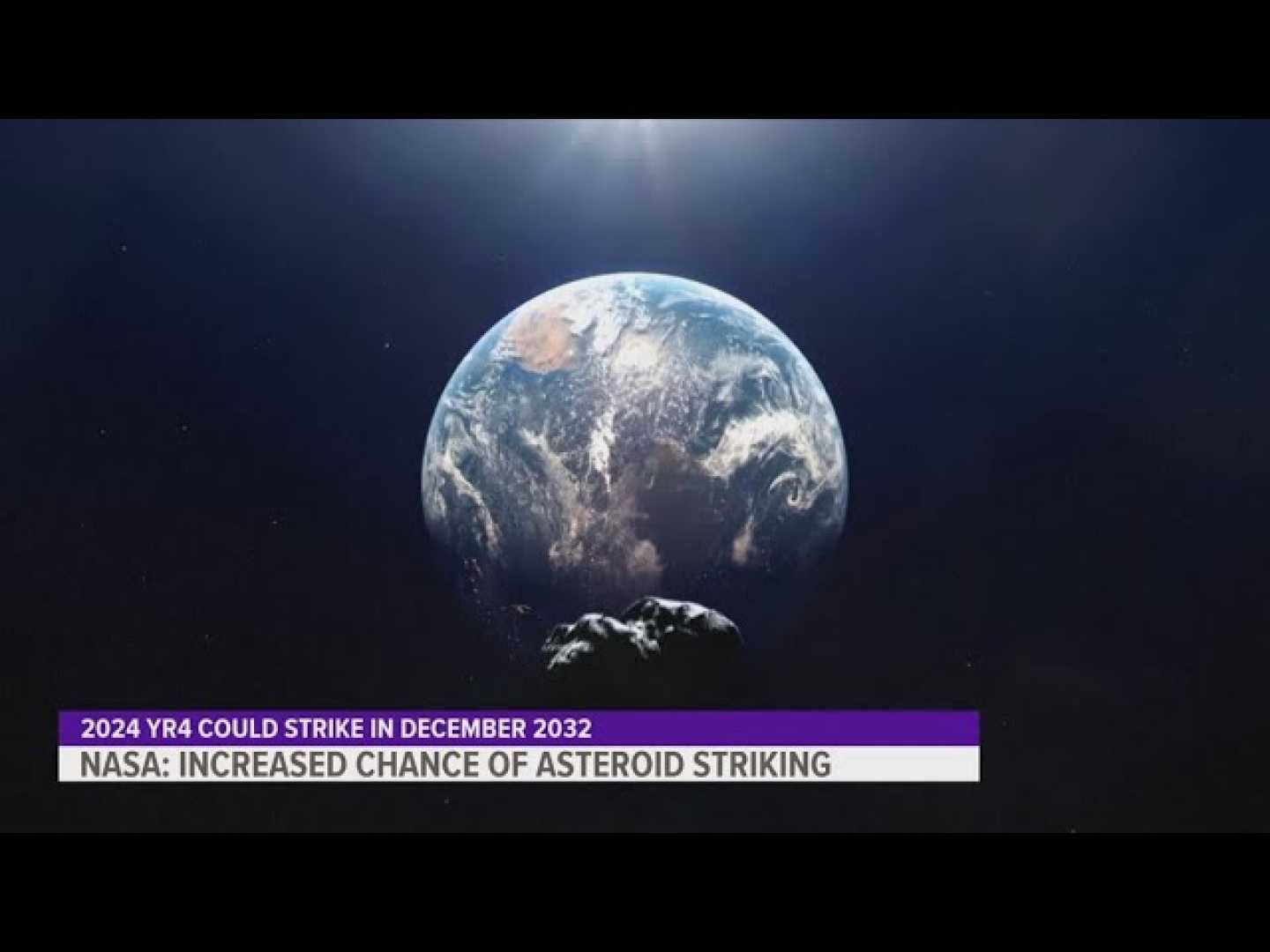News
Asteroid 2024 YR4: Growing Concerns Over Potential Earth Impact

HONOLULU, Hawaii — Astronomers are closely monitoring asteroid 2024 YR4, recently deemed the riskiest near-Earth object ever discovered. On February 18, NASA‘s Center for Near-Earth Object Studies (CNEOS) calculated the asteroid’s likelihood of colliding with Earth on December 22, 2032, at 3.1%. This figure surpasses the earlier estimate of just 1.2% calculated in late January, emphasizing the ongoing uncertainties regarding the asteroid’s trajectory.
Despite the recent spike in risk assessment, experts like Bruce Betts, chief scientist at The Planetary Society, stress that initial observations often fluctuate in probability assessments. “It’s not surprising the percentage went up,” Betts said in an interview. “But there’s much more likelihood that it’s okay.”
Discovered on December 27, 2024, by astronomers at the Asteroid Terrestrial-impact Last Alert System (ATLAS) in Chile, 2024 YR4 measures between 131 to 295 feet (40 to 90 meters) wide. At such sizes, it is classified as a ‘city-killer’ asteroid. This classification weighs heavily on Lawrence Denneau, an ATLAS astronomer, who noted the significance of the asteroid given that no other large asteroids currently have an impact probability above 1%.
Using a variety of ground-based telescopes, astronomers are urgently gathering observational data to refine the asteroid’s orbit and hopefully reduce its predicted risk. The ongoing collaboration among global space agencies—such as NASA, the European Space Agency (ESA), and the International Asteroid Warning Network (IAWN)—is crucial as they share data and assessments regarding potentially hazardous asteroids.
In 2021, scientists revised the threat level of asteroid Apophis, once a top concern, lowering its collision probability with our planet to near zero after more accurate measurements were taken. Richard Binzel, a professor at the Massachusetts Institute of Technology and inventor of the Torino Scale, which categorizes asteroid impact risks, suggested similar trends might be expected with 2024 YR4. He remarked that this asteroid currently holds a 3 on the Torino Scale, denoting a localized destruction risk.
The Torino Scale operates on a zero to 10 risk index. A score of 3 indicates that current calculations place a 1% or greater chance of collision within the next decade, with pending observations likely to shift it down to level 0 as more data is gathered. Binzel observed, “For many of these objects, uncertainties in their preliminary orbits will result in calculations yielding nonzero probabilities.”
As astronomers continue to monitor the 2024 YR4, they are reminded of the unpredictable nature of such close-approaching celestial bodies. Betts explained, “Earth could very well end up not being a target at all.”
The large asteroid is projected to reach a point in its orbit where it becomes invisible in April, not returning to visibility until June 2028. Binzel indicated the importance of continuous monitoring until its next proximity allows for more precise tracking, comparing the uncertainty of its future trajectory to “a long fettuccine noodle” stretched across its path around the sun, with Earth lying beneath it.
Given that approximately 70% of Earth’s surface is covered in ocean, even if asteroid 2024 YR4 were to collide, it is less likely to strike a populated area, decreasing the potential for widespread devastation and casualties. However, scientists remain vigilant, emphasizing the need for coordinated efforts should an asteroid threaten Earth.
As technological advancements in asteroid tracking and potential deflection missions progress, agencies like NASA are preparing for scenarios that may arise in the future. “In fact, nature already has settled the question,” Binzel confirmed. “We just don’t know that answer yet.”












